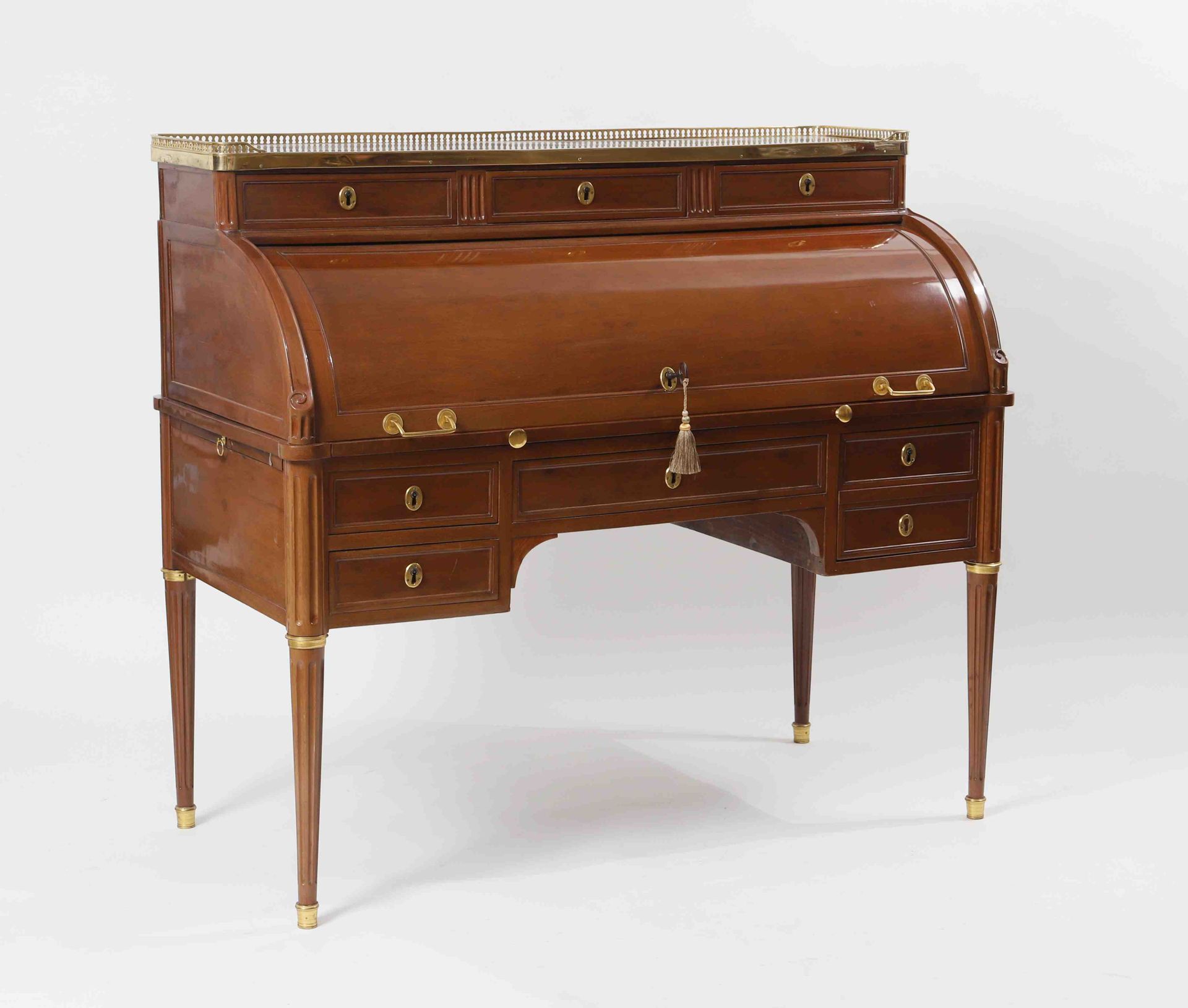Description
Remarkable Louis XVI period cylinder desk attributed to Riesener In mahogany and mahogany veneer speckled on all sides, it opens with a quarter cylinder revealing an interior with three long drawers side by side and three simulated drawers, sliding writing surface covered with a tan leather gilt with small irons. A drawer in the belt framed on the right by a box simulating two drawers and left by two drawers stacked. Two side pulls with fine rings and sheathed in a leather similar to the tray extend the work space. St Anne's gray marble top forming a step set with an openwork brass gallery, three rectangular drawers juxtaposed. It rests on four tapered feet, with Louis XVI flutes. Entrances of locks in triangle of origin and handles of pulling in gilded and chased bronze. Original triangle key. Louis XVI period Dimensions: H: 114; W: 126,5; D: 63,5 cm A great classic of the Louis XVI period, the "secrétaire en bureau et abattant à cylindre fermant les tiroirs" is present in the inventory of royal furniture in 1760. Also known as the "bureau à panse", the "secrétaire à rouleau" or the "bureau à tambour", the writing table is no longer made of slats but of a semi-cylindrical flap that can be pulled to cover the work table. An identical desk stamped by the master cabinetmaker Jean-Henri RIESENER is represented on page 136, illustration n° 148 of the book by Guillaume JANNEAU, Le Mobilier français, Le meuble d'ébénisterie, Les Éditions de l'amateur, Paris, 1993 - Collection des Arts Décoratifs, Paris.
141
Remarkable Louis XVI period cylinder desk attributed to Riesener In mahogany and mahogany veneer speckled on all sides, it opens with a quarter cylinder revealing an interior with three long drawers side by side and three simulated drawers, sliding writing surface covered with a tan leather gilt with small irons. A drawer in the belt framed on the right by a box simulating two drawers and left by two drawers stacked. Two side pulls with fine rings and sheathed in a leather similar to the tray extend the work space. St Anne's gray marble top forming a step set with an openwork brass gallery, three rectangular drawers juxtaposed. It rests on four tapered feet, with Louis XVI flutes. Entrances of locks in triangle of origin and handles of pulling in gilded and chased bronze. Original triangle key. Louis XVI period Dimensions: H: 114; W: 126,5; D: 63,5 cm A great classic of the Louis XVI period, the "secrétaire en bureau et abattant à cylindre fermant les tiroirs" is present in the inventory of royal furniture in 1760. Also known as the "bureau à panse", the "secrétaire à rouleau" or the "bureau à tambour", the writing table is no longer made of slats but of a semi-cylindrical flap that can be pulled to cover the work table. An identical desk stamped by the master cabinetmaker Jean-Henri RIESENER is represented on page 136, illustration n° 148 of the book by Guillaume JANNEAU, Le Mobilier français, Le meuble d'ébénisterie, Les Éditions de l'amateur, Paris, 1993 - Collection des Arts Décoratifs, Paris.
You may also like
